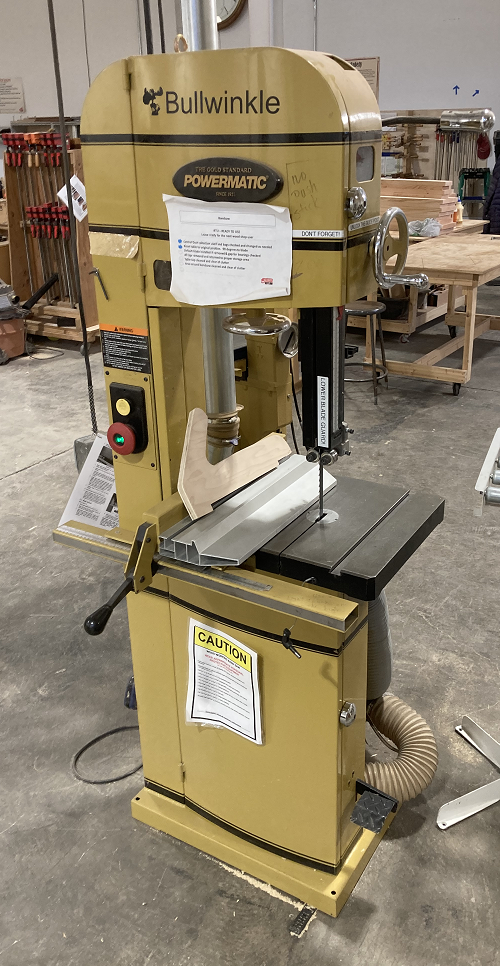Category:Vertical Band Saws -- Wood Cutting
| Wood Cutting Band Saw | |
|---|---|
| General Info | |
| Make | |
| Model | |
| Serial | |
| Specs | |
| Manual | |
| Asylum Info | |
| Location | [[:Category:|]] |
| Rubric | |
| Training | |
| Testing | |
| Restrictions | |
[[Category:]]
Description
The cutting blade in a band saw is a continuous loop that travels through the machine on pulleys. In a vertical band saw, the blade travels vertically through a slot in a table, and workpieces are hand-fed through the blade to make a cut.
Wood-grain affects the forces and motions during cutting in a saw, so there is a ripping fence and a miter gauge as in a table saw. With metal cutting, the workpiece is usually clamped in a vise.
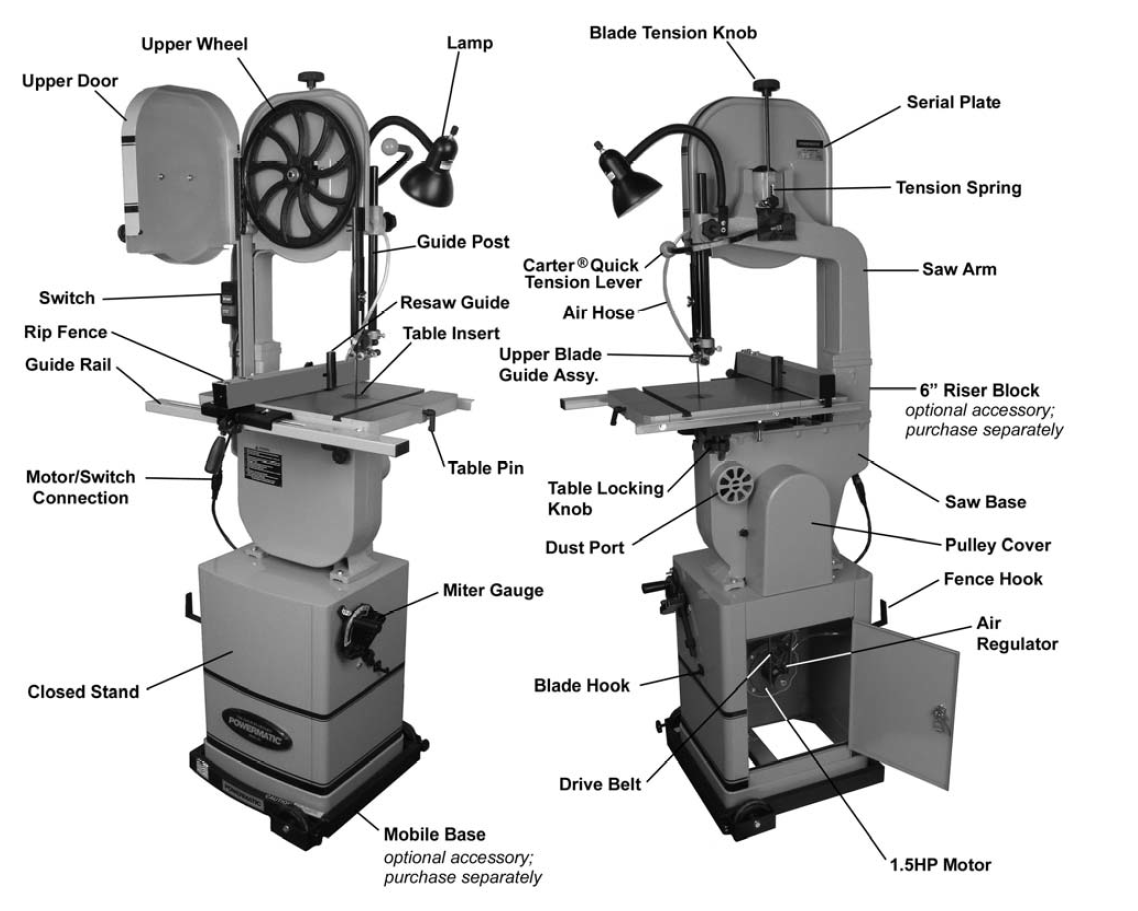
| |
|---|---|
| Parts of a typical band saw. |
Use For
- Dry, flat lumber
- Boards
- Plywood sheets that fit within the tool width
- Logs, carvings, or other irregular lumber if supported properly
Do Not Use For
- Pressure-treated
- Wet lumber
- Plastic
- Metal or metal-coated
- Composites
Safety Notes
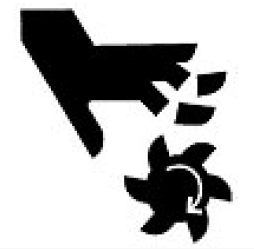
| |
|---|---|
This is a familiar tool that can deceive the user into believing that they can operate it casually.
Do not relax safety protocols or or treat this tool as anything but a potentially lethal hazard.
 |
Eye and lung protection required! | |
|---|---|---|
Personal:
- Always wear safety glasses. Eyeglasses are not safety glasses.
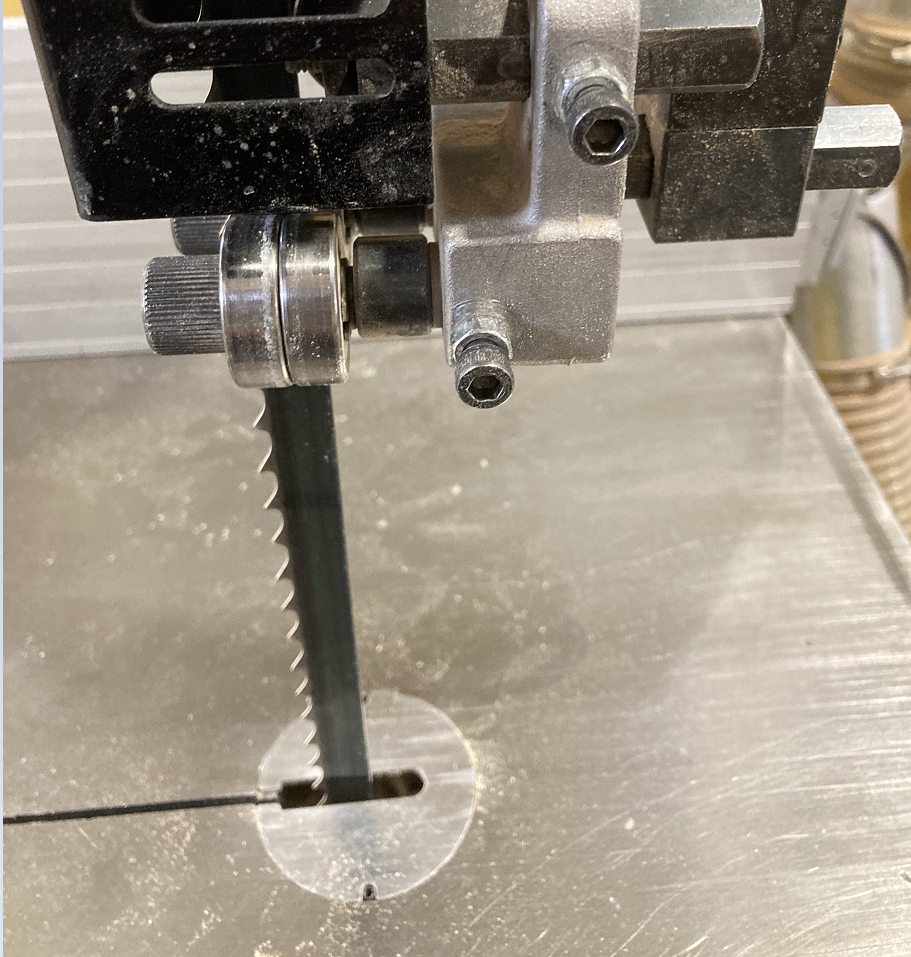
| |
|---|---|
| Keep fingers away! |
- No loose clothing. Tie up long hair. No jewelry.
- Wear non-slip shoes and keep a stable stance to avoid falling or leaning against the blade.
- Do not wear gloves. Gloves can be drawn in by the moving blade, causing very serious injury.
- Hearing protection is recommended.
- Always use the dust collector. Both band saws in the Wood Shop are connected to the central dust collector (Coral AF/4C)
| Dust collection required! | ||
|---|---|---|
- All forms of dust are hazardous. Wear a dust mask to avoid exposure.
- Do not cut hazardous materials such as pressure-treated lumber.
Tool:
- Always lower the blade guard to the lowest point that will allow a cut.
- Always unplug the tool before servicing.
- Remove adjusting keys and wrenches before switching on the tool.
- Keep safety guards in place at all times.
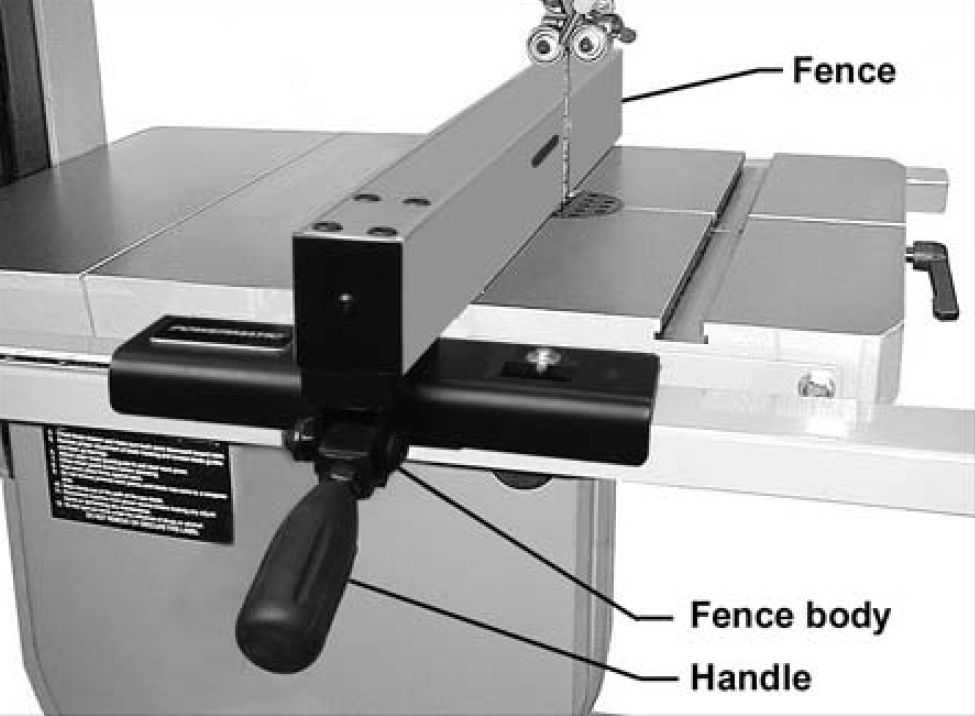
| |
|---|---|
| A generic rip fence. Fences on saws in the Wood Shop may have a different profile. |
- Use a push stick when feeding small pieces into the saw.
Accessories
Rip Fence
Wood-cutting band saws have similar accessories to those on a table saw. The most important is the rip fence.
This accessory guides the workpiece lengthwise at a fixed distance through the blade. It clamps in place using the handle shown.
Important Use a push stick to finish cuts. Keep hands and fingers away from the blade at all times.
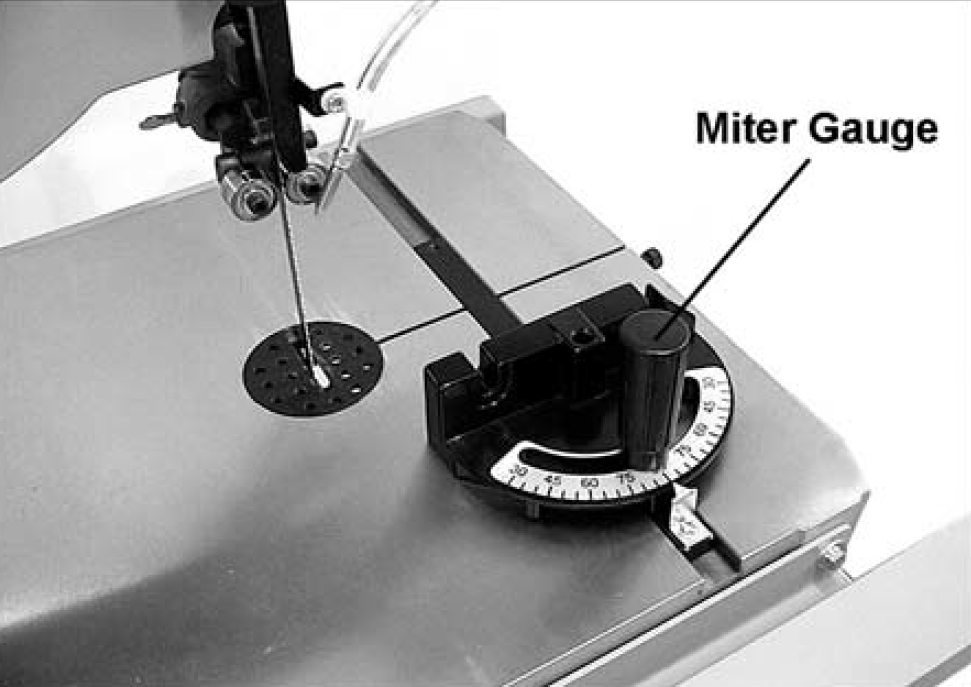
| |
|---|---|
| A generic miter gauge. |
Miter Gauge
A miter gauge is used for cross-cutting or for making miter cuts. To use it, remove the rip fence and seat the gauge in the slot on the table.
Tilting the table
Many band saws have a feature allowing the operator to tilt the table to make bevel cuts. Please check with the shop lead whether these types of cuts are allowed on a particular tool.
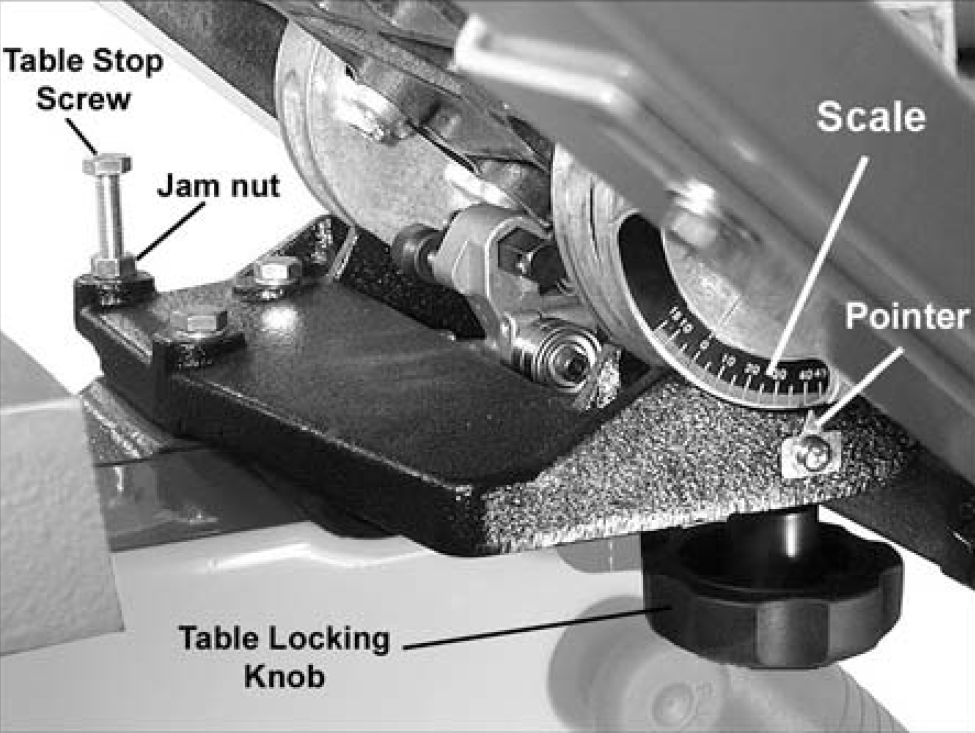
| |
|---|---|
| Underneath the table there may be a tilting gauge for bevel cuts. |
Pages in category "Vertical Band Saws -- Wood Cutting"
The following 2 pages are in this category, out of 2 total.
